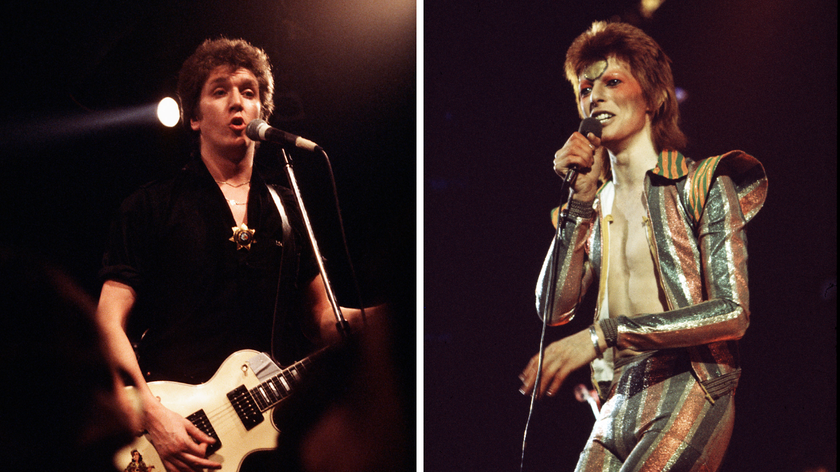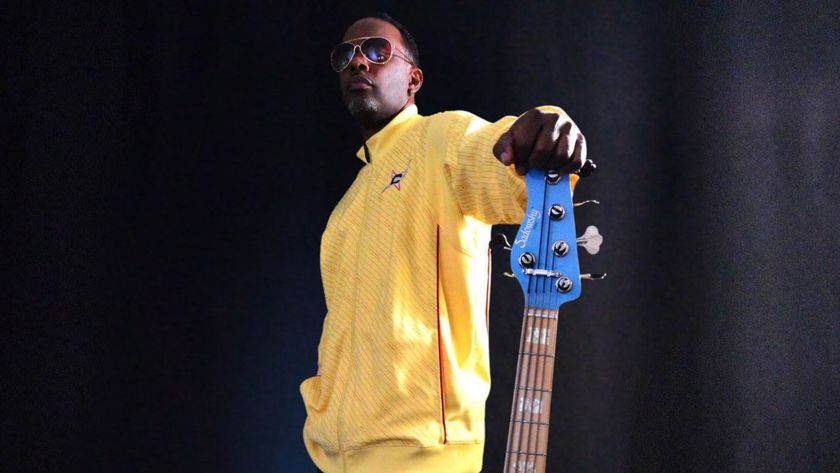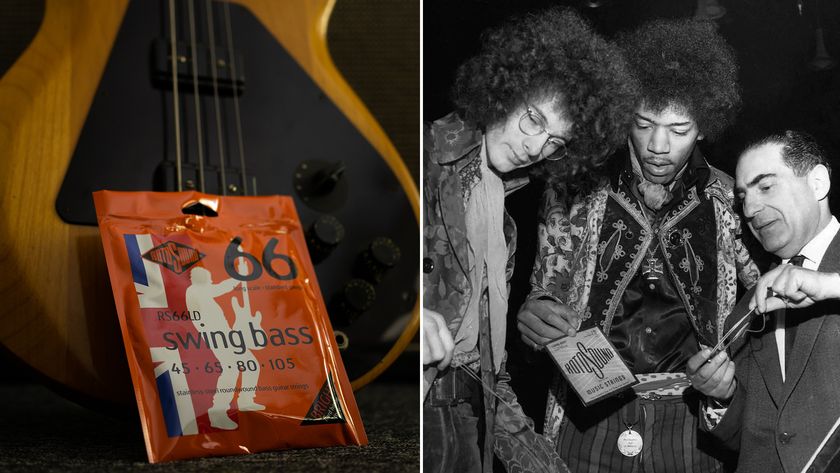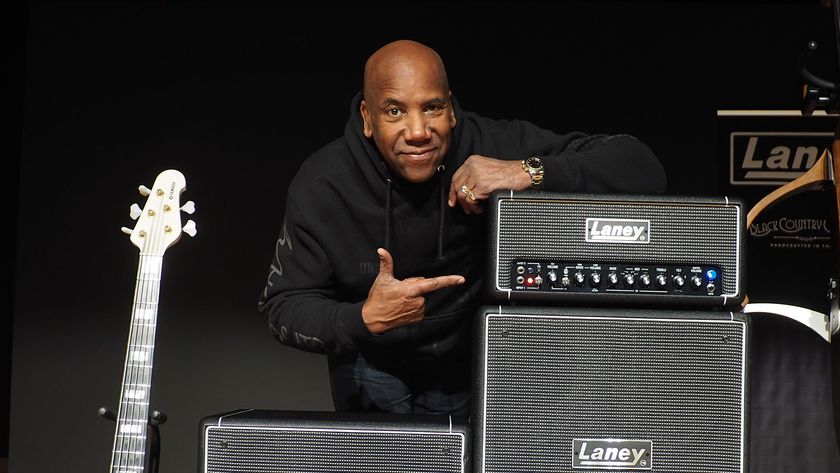Territorial Pissings: Seven Weirdest Moments In Grunge
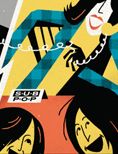
From "grunge speak" to $300 flannel shirts to Tad Doyle's diarrhea—Seattle's early-Nineties music scene was defined by bizarre behavior and, often, bodily fluids. Here are seven of its weirdest moments.
If you were living in Seattle in the early Nineties, during what was the height of grunge mania, it seemed at times like rock and roll legends-in-the-making were on every street corner. There, walking down the side of the street, was none other than Kurt Cobain, looking disheveled and wearing his hunter’s cap with the side flaps. There, behind you in line at the liquor store, was the bass player from Mudhoney buying Maker’s Mark. There, at the Home Show looking at new bathroom fixtures, was Chris Cornell holding up a faucet. There, in the back of a bar raising a ruckus with the bartender, was the indelible, one-of-a-kind Courtney Love.
I saw all that, and more. As the editor of Seattle’s music magazine the Rocket during that era, I watched how bands I’d seen in dive bars suddenly became Lollapalooza headliners. I watched as out-of-town journalists by the plane-load flew in to try to capture the town after a two-day jaunt. I watched many moments of madness and had many of my own, like the time Larry King called me to ask, “What’s the deal with this grunge stuff? What are these kids so angry about?” There were many moments during the grunge years that were exciting and unprecedented and even made locals proud. In 1994 alone, five albums from Seattle bands debuted at Number One on the Billboard charts, a feat that hasn’t been matched by any town since.
But for every moment of chart success and grunge glory, there was another undocumented and unreported moment of weirdness or mayhem. Much of it was either absurd or hilarious, or sometimes both. These are moments you probably won’t hear about in Behind the Music episodes or Wikipedia entries. Too often, grunge history leaves out the humor, or the sarcasm, that was ever present. There was Krist Novoselic’s habit of starting food fights and Dave Grohl’s knack for prank phone calls. There was Alice in Chains’ almost weekly practical jokes. They once mailed me a box of baby bottles filled of excrement and urine, with a note saying they were “pissed” about a certain review. “Layne [Staley] was one of the funniest guys you ever met,” Jerry Cantrell told me recently. “People who never met him have completely forgotten that part of his personality.” I saw that humor at times but also can speak to the smell of his urine.
Many of grunge’s crazy stories were rooted in the madness that occurs when a sleepy port city suddenly becomes the musical center of the world. With it come errors and conspiracy theories. I remember talking with Soundgarden’s Kim Thayil in the Nineties when he explained how the group became apoplectic whenever an out-of-town journalist asked if grunge had “succeeded” as had been “planned.” “These writers talked as if there had been one grand meeting, some conspiracy-planning group, where our band, Nirvana, Alice and everyone else in Seattle had decided to launch grunge and take over the world,” Thayil observed. “It was absurd, as if we had formed this cabal.”
So what follows are seven of the most absurd moments in grunge—the seven pillars of grunge shit, if you like, since many of them have a connection to human elimination. I haven’t included the Alice in Chains bottle of shit, but there are more than a few detours here toward the toilet. All speak to the insanity of a moment when anything with “Seattle” on it flew out of the record stores—back in the age when there were record stores.
01. SUB POP PUNKS THE NEW YORK TIMES
Get The Pick Newsletter
All the latest guitar news, interviews, lessons, reviews, deals and more, direct to your inbox!
This infamous chapter of grunge mania may be the most widely reported on this list—it boasts its own Wikipedia entry under “Grunge Speak,” if you want to look it up. But it deserves repeating, if only because no other single event in that time so directly illustrates how absurd it was to watch the national media cover the Seattle scene.
In November 1992, a reporter for the New York Times was assigned to write about “grunge culture,” and this reporter began pestering Seattle music folks for “the inside scoop.” Megan Jasper was answering phones for Sub Pop then, and like many in Seattle, she had had just about enough of these inquiries. She fallaciously told the reporter that grunge had its own language and then proceeded to make that language up on the spot. She spewed out more than a dozen “code words” that she told the reporter were “grunge speak.”
The New York Times printed the list, thinking it finally had its grunge scoop. Among the terms were “lamestain,” a derogatory term for an “uncool person”; “wack slacks,” the inside name for old ripped jeans; and “cob nobbler,” which was the grunge code for “loser.” Readers of the staid New York–based newspaper might have been shocked to hear that rockers in Seattle used the term “swingin’ on the flippity-flop,” when they wanted to say they were “hanging out.” The Times had not only failed to fact check the list with anyone who actually lived in Seattle but also miscredited Jasper as working at Caroline Records.
Yet in that pre-internet age, the Times grunge-speak hoax wasn’t even disclosed outside of Seattle until a few weeks later. It was then that a writer for the Chicago magazine the Baffler pointed out the joke in print. But when that article appeared, another twist made this chapter even more bizarre: rather than admit it had erred, the Times declared that the Baffler was wrong and had been hoaxed, and that the grunge-speak list was real. The Times went so far as to demand that the Baffler apologize. It didn’t of course, but it’s worth noting that the New York Times has never run a correction, and the list is still up on the newspaper’s web archive. Apparently, the Times is standing by its assertion that “big bag of bloatation” is how a Seattleite would refer to a “drunk.” It was actually the grunge-speak list that was the “big bag of bloatation.”
Everyone in Seattle cackled when the list ran and cackles still when it is brought up. Jasper has gone on to become vice president of Sub Pop, where she has signed a number of important bands, but she is still best known locally as the creator of grunge-speak. Mudhoney eventually printed up T-shirts that read “Lamestain.” Even those are now collector’s items.
02. THERE'S A RIOT GOIN' ON
On the subject of media idiots, I had more than a few encounters of my own, but none greater than a phone call in 1992, around the time the New York Times was writing about “lamestains.” I answered the phone in our office late at night. It was the wire editor from an East Coast newspaper. He claimed that an article had come over the newswire about how so many thousands of kids were expected to descend on Seattle that summer (think Summer of Love redux but with kids in shorts and Doc Martens) and that police had already begun installing barricades. I laughed and said, “Try again.”
But this wasn’t a hoax. At least this guy wasn’t a hoaxster, just an overzealous editor thinking he too had stumbled onto his own grunge scoop. He begged me to “look out the window” to see if there were legions of flannel-shirted kids amassing at that very moment. He claimed the wire piece predicted half a million kids on Seattle’s streets, and he figured many of them were probably already in place. “Seattle’s entire population is only half a million,” I told him. “This is ridiculous.”
The guy pleaded that I look out the window, just in case I had somehow missed a huge crowd gathering below.
I put the phone down and glanced outside. I saw a typical Seattle street scene, with a few drunks near the liquor store, and not much more. I went back to the phone. “There’s nothing,” I told him. “Someone is pulling your leg.”
He didn’t hesitate for a moment: “Is there another window you can look out of?”
03. THE $300 FLANNEL SHIRT
In Fall 1992, in an era when Nirvana’s Nevermind was selling a million copies every three months, even the fashion industry decided it needed a piece of grunge. Designer Marc Jacobs, then working for Perry Ellis, put together his spring 1993 line, which he called the Grunge Collection. Its debut featured models wearing combat boots parading around in thousand-dollar torn smocks. But the crème de la crème of the collection was a flannel shirt that sold for more than $300. It looked almost identical to one you could buy at any sporting goods or army surplus store for $10, minus the designer label.
Jacobs explained, not unsurprisingly to the same New York Times reporter who broke the grunge-speak scoop, “I found a two-dollar flannel shirt on St. Mark’s Place, and I sent it off to Italy and had it made into a $300-a-yard plaid silk.”
The Grunge Collection bombed in high-fashion circles, as models in wool caps and unlaced boots failed to move product. The line did earn a lot of press attention, however, and gained Mr. Jacobs the nickname “the Guru of Grunge.” But in another twist that seems typical of the era, the high-fashion grunge clothes sold so poorly that if you happened to own a mint article from the line, any fashion museum in the land would gladly take it off your hands for a pretty penny.
04. THE LAME LIST: WHAT'S WEAK THIS WEEK
As grunge took over national magazine covers and fashion runways, the word became a punchline in Seattle. Nowhere was it skewered more than on Seattle’s sketch-comedy television show Almost Live, which aired on a local station in the slot before Saturday Night Live.
In 1990, Almost Live debuted a skit titled “The Lame List: What’s Weak This Week.” It featured a half-dozen rocker types, shaking their hair and shouting “Lame,” as a voiceover by host John Keister announced the news headlines of the week. Example: Voiceover says, “Breast Reduction Surgery.” Headbanger response: “Lame! Lame! Lame!” Voiceover: “European economic reforms.” Headbanger response: A puzzled, raised eyebrow and a muted, “Lame?”
The original cast of rockers in the Lame List were taped in 1990, and that same footage was used over and over during the next decade, but with the headlines of the current week read before the usual shouts of “Lame.” And though some of the humor was local, much of it translated even when Comedy Central picked up Almost Live and ran it nationally. Yet, as the Nineties went on and viewers all over America tuned into Almost Live on Comedy Central, many said to themselves, “Doesn’t that one guy look familiar?” They were recognizing Kim Thayil of Soundgarden, who was the “Lame List” headbanger with the beard.
“We didn’t even ask Kim,” recalls host Keister. “I just asked Jeff Gilbert [then writing for the Rocket and Guitar World], to gather up a bunch of headbanger guys, and Kim ended up being one of them.” A few of the other lame listers included members of the bands Forced Entry and Gruntruck.
Later, all four members of Soundgarden would do a special-edition “Lame List” where they all shook their hair and shouted “Lame!” to everything suggested. But the band were famous by then, and seeing Chris Cornell shaking his hair was a dead giveaway that the band was in on the joke at that point. Just search YouTube for “Lame List” and you can see the evidence for yourself.
Almost Live had one other classic grunge moment with the skit “Rock Star Fantasy Camp.” This bit included Thayil again but also Pearl Jam’s Mike McCready and Nirvana’s Dave Grohl. “Come to the Rock Star Fantasy Camp, and you too can learn the tricks of the trade,” Grohl boasted in the clip, while McCready demonstrated how to smash a guitar. “We had no idea later that someone would actually create a real ‘rock star fantasy camp’ and charge people thousands for it,” Keister says.
But the best bit of “Rock Star Fantasy Camp” would be familiar to any readers of this magazine. Grohl, McCready and Thayil demonstrated different “rock star poses,” where they made serious faces for a still camera. Included were “Album Cover,” “Rock Video,” “Heavy Metal Magazine” and, finally, “Guitar Face.” Even without seeing the skit, the readers of this magazine should find it pretty easy to imagine “Guitar Face.”
05. IS THAT A MOUSE IN YOUR MOUTH, OR ARE YOU JUST GLAD TO SEE ME?
If there was a forerunner to Seattle grunge, it came in the form of the Eighties punk scene, and in that milieu Steven “Jesse” Bernstein was one of the true godfathers. He was a poet rather than a musician, but his performance art had a big effect on the music scene, and he counted among his fans many musicians who would later become grunge headliners. Bernstein was bipolar and tortured, and sadly, he committed suicide in 1991, one year before Sub Pop released his classic Prison album. He is now the subject of a recently released documentary titled I Am Secretly an Important Man, which will no doubt further his reputation.
Bernstein’s oversize personality made an indelible impression on anyone who encountered him, and if you hung out with him for very long, eventually your life would be endangered in one way or another. I was once with Jesse in a tavern when the plate-glass window suddenly shattered and cascaded upon us. A former flame had thrown a brick at the window after seeing Jesse inside.
But it was Bernstein’s edgy live shows that would inspire soon-to-be grunge rock stars to ensure their concerts were exciting things to witness. At one poetry reading, Bernstein performed with a live mouse inside his mouth. His words were garbled, but it was memorable reading nonetheless, particularly for the mouse.
off!” and Bernstein realized his gambit hadAt another show that I witnessed, Jesse became disturbed after a few people in the crowd left while he was reading. He grabbed a switchblade from his pocket, pulled his penis out of his pants and put the sharp edge of the blade against his member. “If anyone leaves, I’m cutting it off,” he threatened. Someone immediately left. The crowd began to chant, “Cut it gone terribly wrong. He shifted gears and threatened to urinate on the next person who left, but when someone did leave, he only managed to pee on an innocent crowd member. Finally, he settled on a more effective restraint. “I’m going to stab the next person who leaves or talks,” he announced. The crowd remained silent for the rest of the reading. At the same reading, Bernstein stuck his finger in his anus, pulled it out and asked the crowd to sniff it.
Kurt Cobain was most likely at this particular reading, though at the time he would have been just an anonymous teenager. As the night went on, I delicately moved toward the back of the crowd, away from the pee, switchblade and smelly finger. But I like to think that Kurt might have been one of the kids in the front row moving forward to smell Bernstein’s stinky pinkie.
06. TAD VS. HILLBILLY GIRL AND PEPSI
Among the major-label signing frenzy that followed the success of Nirvana and Pearl Jam, more than a few bands got lost in the sauce. One of the best were Tad, whose distorted and whirly garage rock made them one of the only groups in the scene that actually deserved the title “grunge.”
Fronted by 300-pound former butcher Tad Doyle, Tad were one of the first bands signed to Sub Pop Records. Initially, they were considered the best hope for a commercial breakout band in late-Eighties Seattle. When Tad toured England in 1989 with Nirvana—Doyle’s girth was part of the reason that tour was nicknamed “heavier than heaven”—many thought Tad outplayed Nirvana.
But fate played a number of sad tricks on Tad, a band with bad luck at every turn. First, Pepsi-Cola sued them over their 1990 single “Jack Pepsi.” The record sleeve featured the soft-drink logo in its design, with the name “Tad” substituted for the cola maker’s. Pepsi claimed that its trademark had been infringed, and the single was pulled.
A few bands have survived a single image copyright controversy—think Vampire Weekend’s most recent album—but Tad had three. Following the “Jack Pepsi” episode, they released their 1991 album, 8-Way Santa (named after a kind of blotter acid), the cover of which featured a thrift store photo of a hillbilly guy grabbing his girlfriend’s boob. The woman in the photo saw the cover and filed suit. While these controversies gained Tad media attention, having their record pulled out of shops was a deterrent to sales. “We just had some really bad, bad luck,” Tad bassist Kurt Danielson once told me.
That wasn’t the end of Tad’s bad luck (all of which is covered in the excellent 2008 documentary Busted Circuits and Ringing Ears). When they finally were signed to a major label in 1993 and went on the road with Soundgarden, another graphic design scuttled their big break. To promote their album Inhaler, the band issued a poster featuring Bill Clinton smoking a joint and saying, “It’s heavy shit.” It was one thing to take on hillbillies and Pepsi, but a sitting president was another matter. Their label dropped Tad, and the group was history.
If there was any solace for the members of Tad, each of whom went to other bands and play in Seattle to this day, it might have come in the infamy they played in Kurt Cobain’s songwriting. Tad Doyle’s diarrhea during that 1989 European tour inspired Kurt to write the song “Immodium” (renamed “Breed”) about Doyle’s gastrointestinal problems. Indeed, it seems that Tad had some heavy shit.
07. THE GRUNGE STAR WITH THE STRONGEST BALLS
Tad named one of their albums God’s Balls, but the biggest balls in Seattle during the grunge years belonged to a fellow by the name of the Amazing Mr. Lifto. Lifto could hoist a hundred-pound weight off the ground using only a cord attached to his testicles.
Lifto was part of a touring act from Seattle in the Nineties that did blockbuster business all over the world, and even played at Lollapalooza. It was called the Jim Rose Circus, and while the performers weren’t musicians, the troupe did tour with Marilyn Manson, Nine Inch Nails, Korn and Godsmack.
The Jim Rose Circus was unlike any circus before or since. Leader Rose would have audience members stand on his head after he stuck it in a crate full of glass shards; Bebe the Circus Queen would crawl into a giant plastic bag, whereupon all the air would be sucked out until she began to suffocate; the Torture King would eat broken light bulbs; and the Enigma showed off his full-body tattoo, which covered his face with puzzle pieces. One of my friends went to high school with the Enigma and says he is always the life of any reunion party.
For a few years, the Jim Rose Circus was as famous as any band from Seattle. The troupe was featured on an episode of The X-Files and on The Simpsons, and it briefly had its own show on the Travel Channel. The circus’ home video became a best seller.
And it was during the Jim Rose Circus Lollapalooza tour that the troupe earned its place in history, and with it, the honor of being part of the single sickest moment of the grunge era. Tad Doyle could have inspired it, but instead it involved the even bigger marquee names of Pearl Jam and Soundgarden.
One of the Circus performers was Matt “the Tube” Crowley, who would stick a length of plastic tubing into his throat until it ended up in his stomach. Next, he’d use a hand pump to expel his own stomach bile into a container. As his finale, he would drink the bile onstage.
At one of the Lollapalooza shows, both Eddie Vedder and Chris Cornell joined the Jim Rose Circus onstage, and it was in that moment when the history of grunge experienced its one stomach-turning nadir. After Crowley had pumped out his stomach bile, but before he’d swallowed it again, both Vedder and Cornell sampled the disgusting liquid. It was memorable, it was sick, it was stranger than fiction, and in that way it was a lot like the rest of grunge.
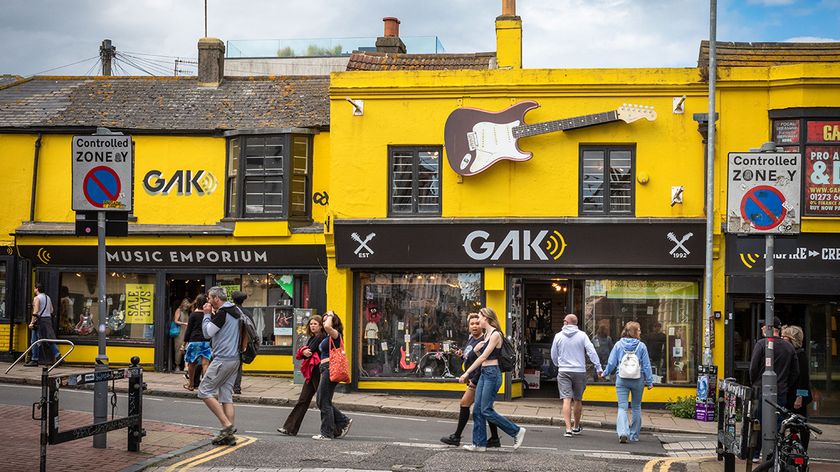
One of the UK’s biggest music retailers takes website offline and shuts store for “maintenance”, fueling closure speculation
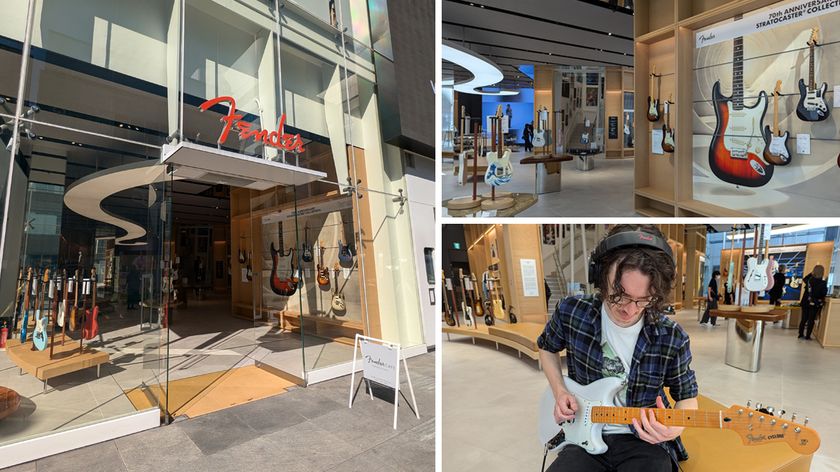
“If fashion brands and computer brands can do it, why can’t we?” I journeyed to the only dedicated Fender store in the world – and found out how it could change the future of guitar retail as we know it
